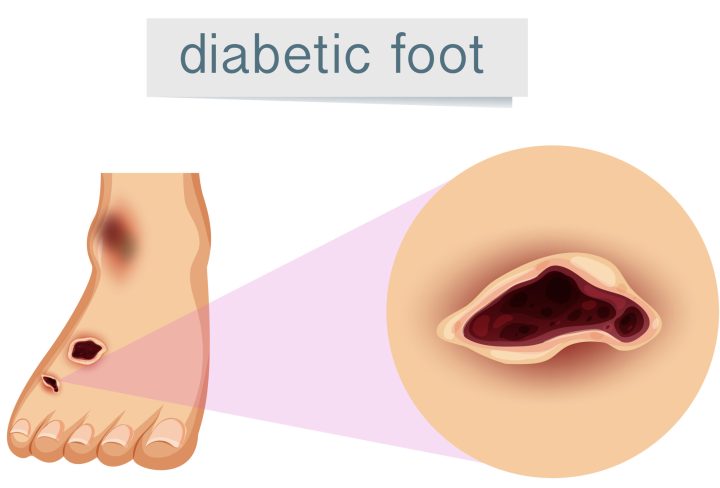Diabetic foot is a serious problem that can affect people with diabetes. It happens when high blood sugar damages the nerves and blood vessels in your feet. Because of this, even small injuries can become big problems. Early care is important to prevent diabetic foot complications. In this blog, you will learn about diabetic foot symptoms, causes, diagnosis, treatment, and prevention.
What is Diabetic Foot?
Diabetic foot refers to any foot problem that happens because of diabetes. For example, you may get sores, infections, or ulcers on your feet. These problems can get worse quickly if not treated. In some cases, diabetic foot can lead to serious infections or even amputation. However, with proper diabetic foot care, most problems can be avoided.
Common Symptoms of Diabetic Foot
It is important to notice early signs of diabetic foot. This helps you get treatment before things get worse. Watch for these symptoms:
If you notice any of these diabetic foot symptoms, you should contact your doctor right away. Early action can prevent serious diabetic foot complications.
Causes and Risk Factors
Many things can cause diabetic foot problems. Most often, high blood sugar over time damages nerves and blood flow. This makes it hard for your feet to heal. Here are some common causes and risk factors:
Because these risks add up, it is important to manage your diabetes and take care of your feet every day.
How is Diabetic Foot Diagnosed?
Doctors use several ways to check for diabetic foot. First, they will ask about your symptoms and medical history. Next, they will look at your feet for any sores, redness, or swelling. They may also check for feeling in your feet using a small tool. Sometimes, doctors use blood tests or scans to see how well blood is flowing. Early diagnosis helps prevent diabetic foot complications.
Treatment Options for Diabetic Foot
Treatment depends on how serious the problem is. For mild cases, simple care at home may help. However, more serious problems need medical care. Here are some common diabetic foot treatment options:
Always follow your doctor’s advice for diabetic foot care. Quick treatment can stop problems from getting worse.
Prevention and Daily Foot Care Tips
Preventing diabetic foot is possible with daily care. Here are some tips to help you avoid foot ulcers in diabetes:
By following these diabetic foot prevention tips, you can lower your risk of serious problems.
When to See a Doctor
Sometimes, foot problems need quick medical care. You should see a doctor if you notice:
Early treatment can prevent diabetic foot complications. If you live in a city, many clinics offer diabetic foot care. Ask your doctor about local resources.
Consult a specialist for personalized guidance on diabetic foot care.


